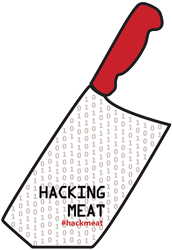Food+Tech Connect and GRACE Communications Foundation present Hacking Meat, an online conversation exploring how information and technology can be used to hack (or reimagine) a more sustainable, profitable and healthy future for meat. Join the conversation and share your ideas or product requests in the comments, on Twitter using #hackmeat, Facebook , Tumblr or at the Hack//Meat Silicon Valley happening June 21-23 in Palo Alto.
Guest post by Kent Schoberle, 4505 Meats
Having previously worked in the animation and film industry, I’ve experienced first hand the power that technology can harness. In that industry, the information and tools that were once prohibitively costly and out of common reach became accessible to all, birthing an entirely new class of small, independent producers and artistry. When I think about the role of technology in the future of meat, I think about how it might be utilized to empower a regional network of small-scale farmers, ranchers, butchers, restaurants and home cooks who could embody the change we need to see in our food system.
One of the issues in my region, Northern California, is the lack of access to local processing facilities and distribution channels for small-scale producers to legally sell their meat to end consumers or restaurants. There are strict USDA requirements for doing so and a lack of USDA inspected processing facilities in the immediate area. Thus farmers have to load his or her animals into a trailer, drive them a significant distance, and coordinate all of the logistics post-slaughter, potentially decimating their already thin profit margins. If technology could play a role in facilitating better real-time transparency between the USDA and producer, perhaps USDA inspection could be more flexible and less costly for producers.
One example could be equipment and software that detect disease or undesirable bacteria in a carcass. Farmers and processing professionals could keep track of specific safety data that would help make it safer for consumers to buy animals more directly from farmers. If this level of data and communication existed, it could be leveraged to create more on-farm processing options, as well as to help alleviate extra transportation costs, reduce animal stress and allow for more localized processing options. Currently there is a mobile USDA processing unit in California, but it is costly and not yet feasible for most small-scale farmers.
Technology could also play a role in the detection of farm equipment malfunction and environmental hazard. On pasture-based farms, there is a heavy reliance on portable electric fencing to help control the placement of animals and to protect them from unwanted predators. If a fence is down or there is a break in the line, notification could help direct immediate attention to the issue. Small portable nodes that read electricity levels, monitor temperature, water level and other programmable variables may one day be affordable and commonly available to farmers.
Other examples of technologies that could be beneficial include moisture detection for lack of water on hot days, unwanted moisture in a feed storage area, temperature spikes in animal housing or any number of other small monitoring tasks to help with the unpredictability of raising animals. It is my hope that we can use technology to reduce the bottlenecks between small farms and consumers, particularly on the processing end. But the true value lies with the people and animals behind the process, rather than the convenience of the end product produced.
The views expressed here are solely those of the author, and do not reflect the views of Food+Tech Connect.
How can information and technology be used to create a more sustainable, profitable and healthy future for meat?Share your thoughts in the comments below, on Twitter using #hackmeat,on Facebook or at the Hack//Meat SV hackathon happening at The Stanford d.school in Palo Alto, June 21-23.
___________________________
 Kent Schoberle is currently the lead cutter and class instructor at 4505 Meats. He processes whole animals on a regular basis and guides students through the entire process from start to finish. His true passion for good meat was discovered years ago while working as a creature technical director in the animation and film business. Eventually he decided to dedicate himself to the meaty cause, seeking out the best path for an immersive learning experience. He found Ryan Farr of 4505 Meats and has now been with the company three years. He routinely spends days off working on local farms and ranches to continue his educational efforts.
Kent Schoberle is currently the lead cutter and class instructor at 4505 Meats. He processes whole animals on a regular basis and guides students through the entire process from start to finish. His true passion for good meat was discovered years ago while working as a creature technical director in the animation and film business. Eventually he decided to dedicate himself to the meaty cause, seeking out the best path for an immersive learning experience. He found Ryan Farr of 4505 Meats and has now been with the company three years. He routinely spends days off working on local farms and ranches to continue his educational efforts.




